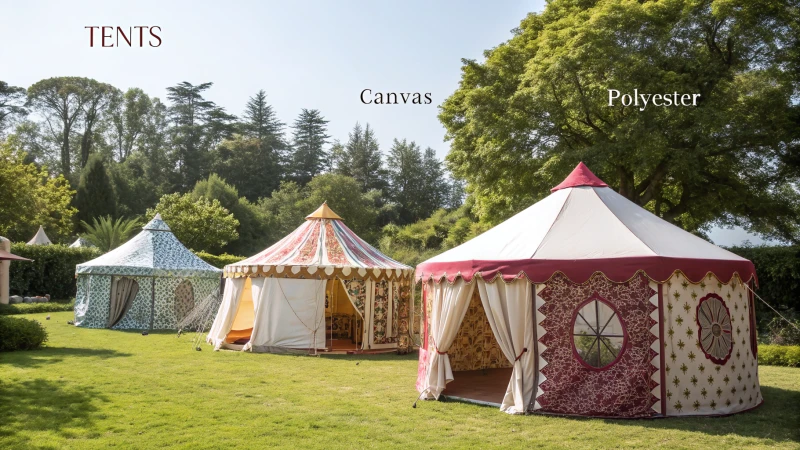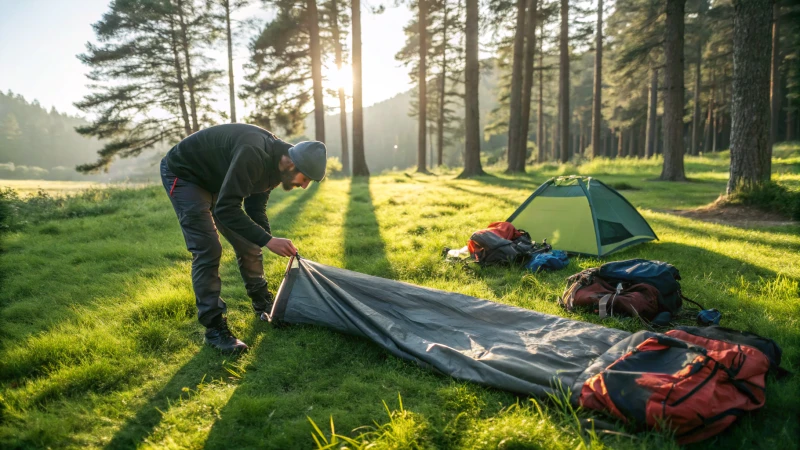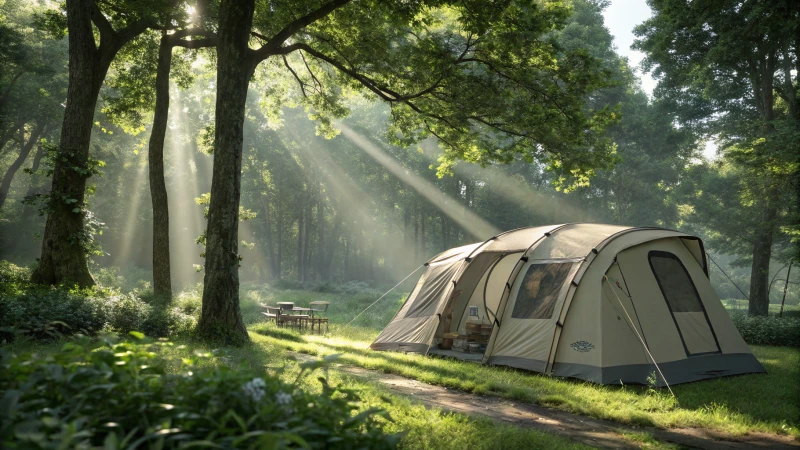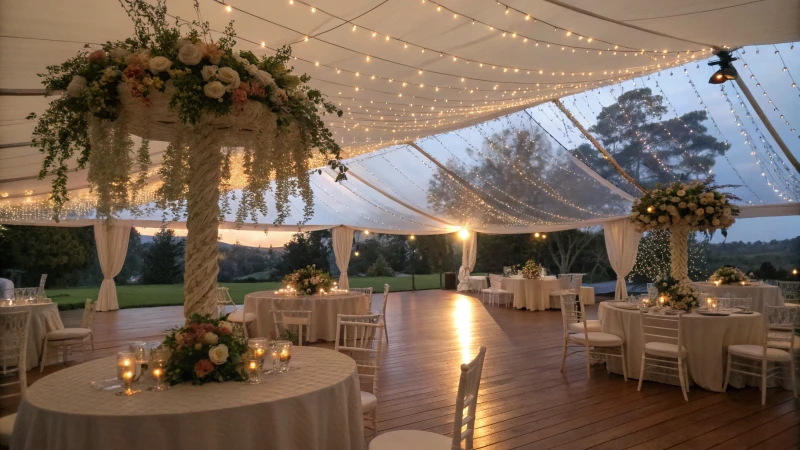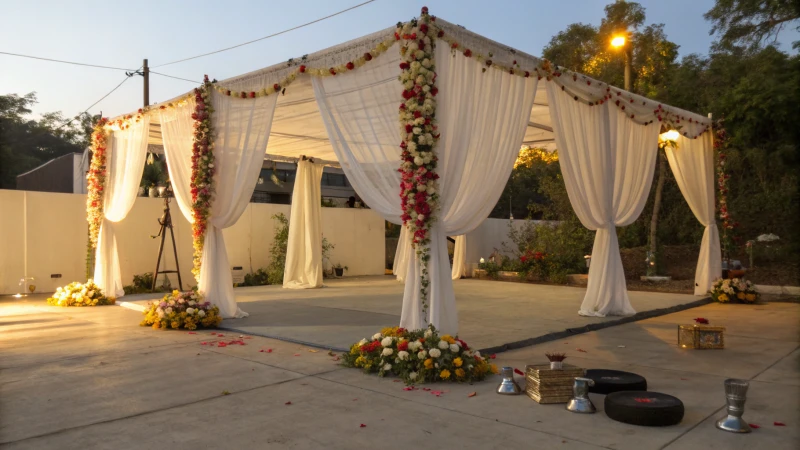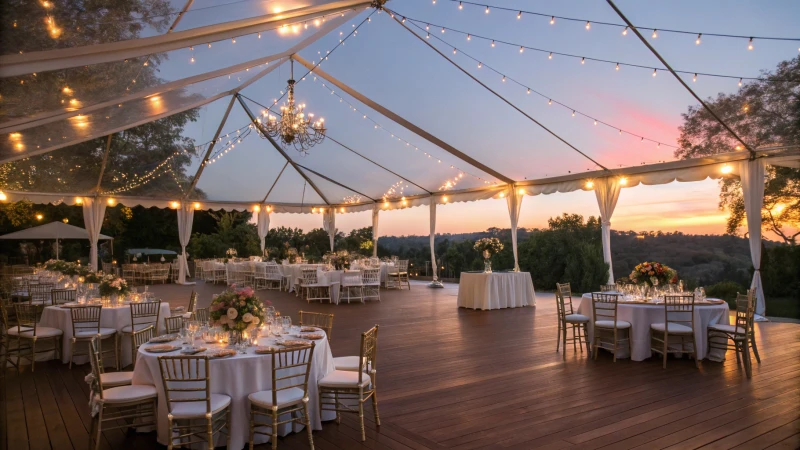
Planning an event for 100 guests and unsure about tent sizing? You’re not alone.
For 100 guests, a tent size between 800 and 1,200 square feet is generally recommended, depending on the seating arrangement. Consider additional space for elements like bars, dance floors, or food stations to ensure a comfortable setup.
I remember planning my first big event and feeling overwhelmed by all the details. Choosing the right tent size was a puzzle I was determined to solve. I learned that for 100 guests, an 800 to 1,200 square foot tent usually does the trick, but it’s not just about fitting chairs and tables.
Think about the vibe you want to create. A cozy wedding reception with round tables needs a different setup than a lively cocktail party with standing room and mingling space. Picture your guests enjoying themselves, moving comfortably from the bar to the dance floor without squeezing past each other. That’s when I realized—it’s not just a tent; it’s the atmosphere I wanted to build.
To truly personalize the experience, envision every detail of your event layout. For instance, will there be food stations scattered around or a central stage for speeches? The space you choose should feel like a natural extension of your event’s theme, allowing guests to flow effortlessly from one area to another. With this in mind, picking the perfect tent size becomes less of a task and more of a creative journey.
A 600 sq ft tent can accommodate 100 guests comfortably.False
A 600 sq ft tent is too small for 100 guests; 800-1,200 sq ft is ideal.
Additional space is needed for a dance floor in a tent.True
Dance floors require extra space beyond seating arrangements in tents.
What Seating Arrangements Are Best for Your Event?
Picking the perfect seating arrangement is like setting the stage for an unforgettable event experience.
The ideal seating arrangement for any event hinges on its nature and objectives. Opt for theater-style for clear views during presentations, banquet style for intimate dinners, and cabaret style for lively networking sessions.
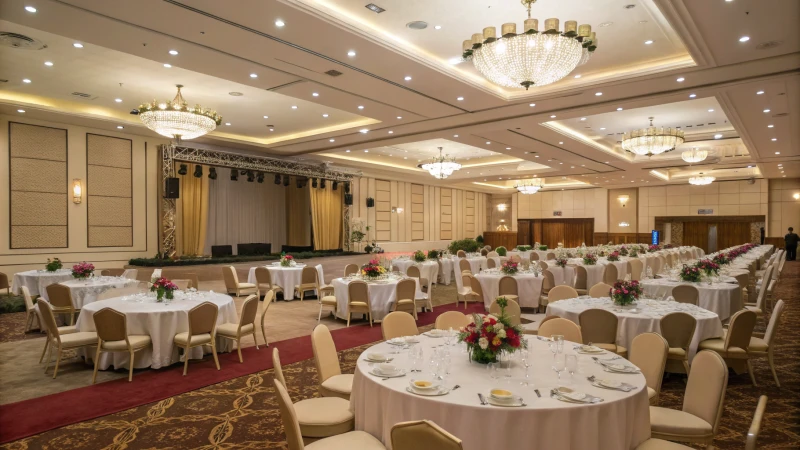
Understanding Different Seating Arrangements
When it comes to planning events, I’ve realized that seating arrangements1 can make or break the experience. Whether you’re aiming for a cozy gathering or a grand spectacle, the way you set up those chairs and tables speaks volumes about the atmosphere you want to create.
Theater Style
Imagine everyone’s eyes glued to the stage during a powerful speech or an emotional ceremony. That’s what theater-style seating does. It’s perfect for those big moments, like when I watched my best friend receive his graduation diploma. This setup uses space efficiently, allowing more guests to join in the celebration.
| Event Type | Seating Capacity |
|---|---|
| Graduation Ceremony | High |
| Corporate Seminar | High |
Banquet Style
For those events where conversation and connection are key, banquet-style seating is the go-to. I remember setting this up for a friend’s wedding—each round table became its own little party, buzzing with laughter and clinking glasses. This style is all about bringing people together.
| Event Type | Seating Capacity |
|---|---|
| Wedding Reception | Medium |
| Gala Dinner | Medium |
Cabaret Style
Think of cabaret-style as the ultimate blend of focus and mingling. Perfect for a product launch or networking event, I’ve seen this setup encourage both engagement with a presentation and lively discussions amongst guests. It’s like the best of both worlds.
| Event Type | Seating Capacity |
|---|---|
| Networking Event | Medium |
| Product Launch | Medium |
Each seating arrangement offers its own unique benefits, influencing how guests interact and enjoy your event. Whether you’re aiming for engagement or elegance, these setups can transform your space into something truly memorable. Keep your goals front and center as you decide because the right layout can elevate your event from ordinary to extraordinary.
Theater-style seating maximizes audience capacity.True
Theater-style seating is designed to accommodate the maximum number of people.
Cabaret-style seating is ideal for formal dinners.False
Cabaret-style is better for networking events, not formal dinners.
How Does Additional Space Impact Tent Size?
Ever thought about how just a little extra space can completely change the vibe of your event?
Adding extra space to your tent setup does wonders for guest comfort and layout flexibility. Whether it’s accommodating a dance floor or a bar, the right tent size ensures your event runs smoothly and everyone has a great time.
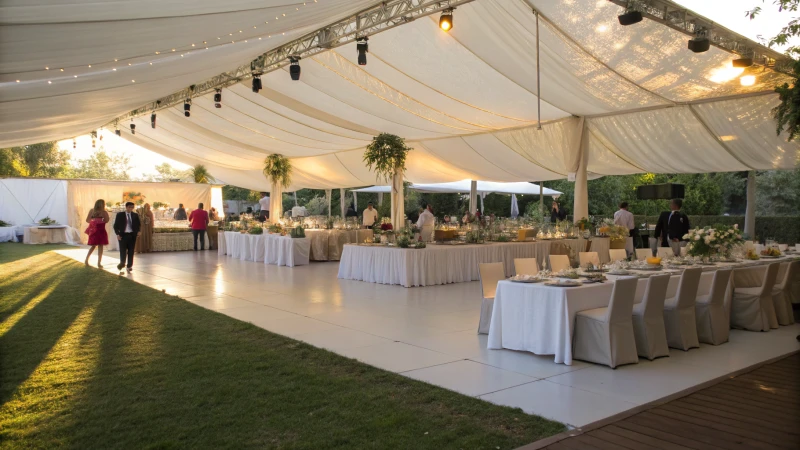
The Role of Event Layout
I remember planning my first big event—no small feat, let me tell you. The way we arranged the seating made a world of difference. For instance, when setting up a theater-style seating2 for 100 guests, we needed around 800 square feet. But when we switched to a banquet-style, it ballooned to 1,200 square feet! Who knew seating could be so spatially demanding?
Incorporating Functional Spaces
Then came the dance floor. I learned that people need around 2-4 square feet each to comfortably bust a move. So if you’ve got 50 guests itching to dance, you’re looking at needing an extra 100-200 square feet. Trust me, nothing ruins a party faster than a cramped dance floor.
| Function | Additional Space Needed |
|---|---|
| Dance Floor | 2-4 sq ft per person |
| Bar Area | 100 sq ft per bar |
| Food Stations | 150 sq ft each |
Enhancing Guest Experience
A tent isn’t just about fitting people inside; it’s about creating an experience. Lounge areas or interactive zones can transform your event from ‘meh’ to ‘amazing!’ During one wedding I planned, adding a cozy lounge area turned the reception into something magical.
Case Study: Wedding Reception
Speaking of weddings, for one reception with 150 guests, we opted for a 30×40 tent3. It was perfect—not just for dining and dancing but also for mingling. Including a dance floor and buffet area pushed us to about 1,600 square feet, ensuring everyone had room to enjoy.
Understanding these dynamics can make or break your event planning. When you’ve got the right space, you create an environment where guests are comfortable and can easily interact—making the day as memorable for them as it is for you.
Theater seating requires less space than banquet seating for 100 guests.True
Theater-style seating needs 800 sq ft, while banquet requires 1,200 sq ft.
A dance floor for 50 guests requires at least 300 square feet.False
A dance floor for 50 guests needs between 100-200 square feet.
Why Is Tent Shape Important for Your Event?
Imagine setting the perfect scene for your event with just the right tent shape. It’s not just about covering space; it’s about crafting an experience.
The shape of a tent significantly impacts its functionality, aesthetics, and guest comfort. Dome tents excel in wind resistance, while A-frame tents optimize space. Choosing the right shape enhances your event’s theme and logistics.
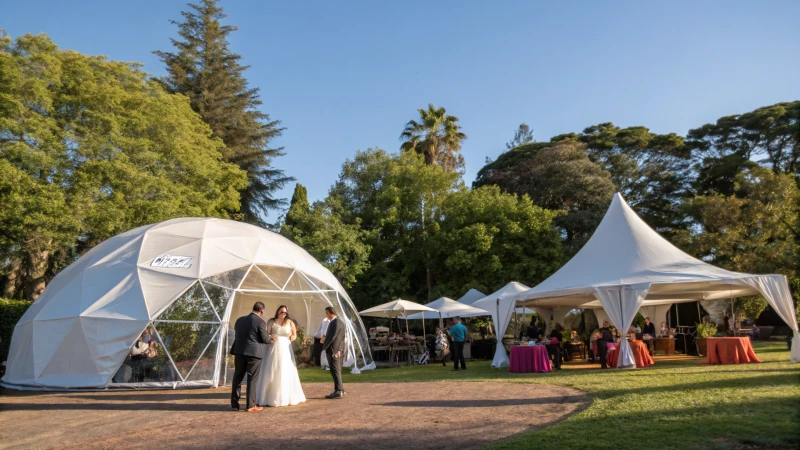
Impact on Aesthetics and Theme
I remember planning my sister’s wedding, fretting over every detail to ensure it matched her dream vision. The tent was no exception. We went with a pagoda tent because its elegant peaks perfectly complemented her fairytale theme. It was like walking into a storybook setting, and the guests were captivated by the ambiance. Choosing the right tent shape truly set the stage for an unforgettable day.
The shape of your tent can set the tone for your event’s visual theme4. Dome tents often provide a modern and sleek look, perfect for contemporary events, while pagoda tents offer an elegant flair, suitable for weddings or formal gatherings.
Space Utilization and Capacity
When I organized a trade show last year, I quickly realized how crucial space was. We opted for an A-frame tent because it offered maximum interior space, crucial for accommodating the booths and allowing attendees to move freely. This layout not only maximized the available area but also enhanced the event’s flow, making it a hit among exhibitors and visitors alike.
Different shapes offer varied spatial benefits. A-frame tents provide maximum interior space, making them ideal for events requiring large open areas like trade shows. Conversely, hexagonal tents5 offer a unique layout that can creatively segment spaces within a single event.
Weather Resistance
Having hosted an outdoor festival in a notoriously windy area, I learned firsthand the importance of a tent’s shape. Dome tents saved the day with their superior wind resistance, providing stability and peace of mind as gusts threatened to disrupt our plans. The aerodynamic design ensured everything stayed in place, allowing guests to enjoy the festivities without a hitch.
Dome-shaped tents are known for their superior wind resistance due to their aerodynamic design. This makes them ideal for events in windy locations. Meanwhile, traditional rectangular tents might require additional anchoring to withstand strong gusts.
Enhancing Guest Experience
At a recent networking event I attended, the circular tent design played a pivotal role in encouraging interaction. Without any corners or dead spaces, people naturally mingled and engaged with one another. It was fascinating to see how the layout facilitated connections and added a dynamic element to the evening.
When planning an event, consider how the tent shape influences movement and interaction among guests. Circular tents can encourage mingling by eliminating corners and dead spaces. This is particularly beneficial for events focused on networking and socializing.
Practical Considerations
From past experiences, I’ve learned that practical considerations can make or break an event setup. Dome tents, although more complex, offer durability and can withstand varied weather conditions, making them worthwhile for long-term use. On the other hand, marquee tents are my go-to for quick setups due to their ease of assembly, saving precious time and labor costs.
From setup time to cost efficiency, each tent shape comes with its logistical considerations. Dome tents might take longer to erect due to their complex structure whereas marquee tents6 are often quicker to set up and take down saving time and labor costs.
Table: Tent Shapes and Their Best Uses
| Tent Shape | Best Used For | Unique Feature |
|---|---|---|
| Dome | Outdoor Festivals | Wind resistance |
| Pagoda | Weddings | Elegant peaks |
| A-Frame | Trade Shows | Maximizes floor space |
| Hexagonal | Themed Parties | Creative interior layouts |
| Marquee | Corporate Events | Versatile setup options |
Choosing the right tent shape not only enhances your event but also aligns with practical requirements. I’ve found that balancing aesthetics with logistics is key to creating an impactful and seamless event experience. Consider your event’s unique needs when selecting a tent shape to ensure both beauty and functionality.
Dome tents offer better wind resistance.True
Dome tents have an aerodynamic design, enhancing wind resistance.
A-frame tents are ideal for weddings.False
A-frame tents maximize space, suitable for trade shows, not weddings.
How Can Tent Layout Elevate Guest Experience?
Ever found yourself worrying about how your event will flow? A well-planned tent layout can be your secret weapon.
To enhance guest experience with a tent layout, focus on strategic seating, distinct zones for activities, and clear pathways. Prioritize guest comfort and interaction flow to create a memorable event.
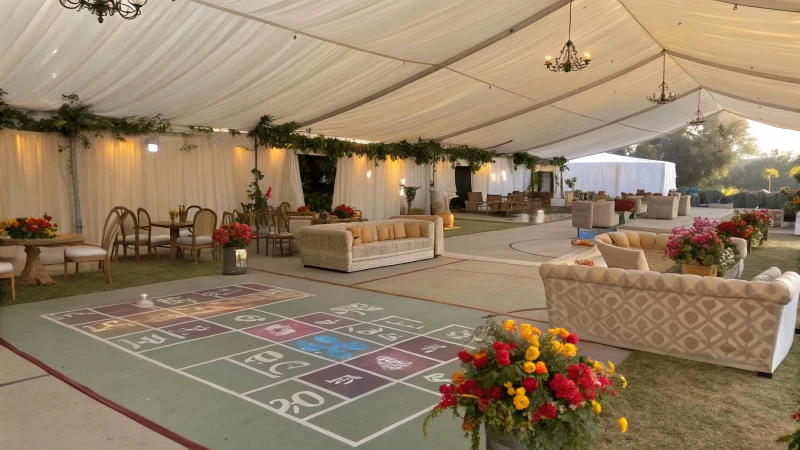
Strategic Seating Arrangements
Seating is the backbone of any event’s tent layout. I remember organizing my sister’s wedding, where we opted for banquet-style seating. It was like setting up little islands of conversation where guests could chat freely. For a cocktail party, theater-style maximizes space and keeps everyone engaged.
| Seating Style | Capacity |
|---|---|
| Banquet | 100 guests |
| Theater | 150 guests |
| Cocktail | 125 guests |
Choosing round tables for a wedding7 can spark social interaction, while rectangular ones lend a formal air.
Creating Distinct Zones
Think of your tent as a mini-city with neighborhoods dedicated to specific activities. At a recent corporate event I organized, having a separate zone for dining and another for dancing made all the difference. The dance floor8 was central, accessible from all sides, ensuring no one missed a beat.
Include a bar for networking or a cozy lounge with plush seating to encourage mingling. These thoughtful touches keep the vibe comfortable and dynamic.
Ensuring Smooth Flow of Movement
Picture guests flowing like a gentle stream through your event. Clear pathways prevent bottlenecks and enhance accessibility. At my last event, placing paths around the tent’s perimeter kept the center open and inviting.
A well-planned pathway system9 guides guests seamlessly between zones, maintaining an airy and welcoming atmosphere.
Leveraging Tent Features
Unique tent features can elevate your event from ordinary to extraordinary. Imagine a transparent roof for stargazing or sidewalls that open to let in fresh breezes—simple tweaks with big impacts. For an evening event, consider climate controls to keep things comfortable.
Lighting and decor that align with your theme can transform the tent’s mood. A well-lit tent interior10 truly brings everything together, enhancing every guest’s experience.
Banquet seating holds 150 guests in a tent.False
Banquet seating holds 100 guests, not 150, according to the context.
Round tables enhance socialization at weddings.True
Round tables are recommended for weddings to enhance socialization.
Conclusion
Choosing the right tent size for 100 guests involves considering seating arrangements and additional space for activities, typically requiring 800 to 1,200 square feet for comfort and flow.
-
Explore this link to understand various seating styles that can enhance guest comfort and interaction at your event. ↩
-
Theater-style seating maximizes guest capacity, ideal for events with presentations or performances. ↩
-
Choosing the right tent size for a wedding ensures guest comfort and allows for essential amenities like dining and dancing. ↩
-
Learn how different tent shapes can elevate your event’s visual theme and style. ↩
-
Explore how hexagonal tents can creatively segment spaces for unique event setups. ↩
-
Discover why marquee tents offer versatile setup options for various event types. ↩
-
Discover how banquet-style seating can enhance social interaction at events. ↩
-
Learn optimal dance floor placement to ensure seamless event flow. ↩
-
Explore strategies for creating efficient pathways within event tents. ↩
-
Find inspiration for creative lighting solutions to enhance tent interiors. ↩


